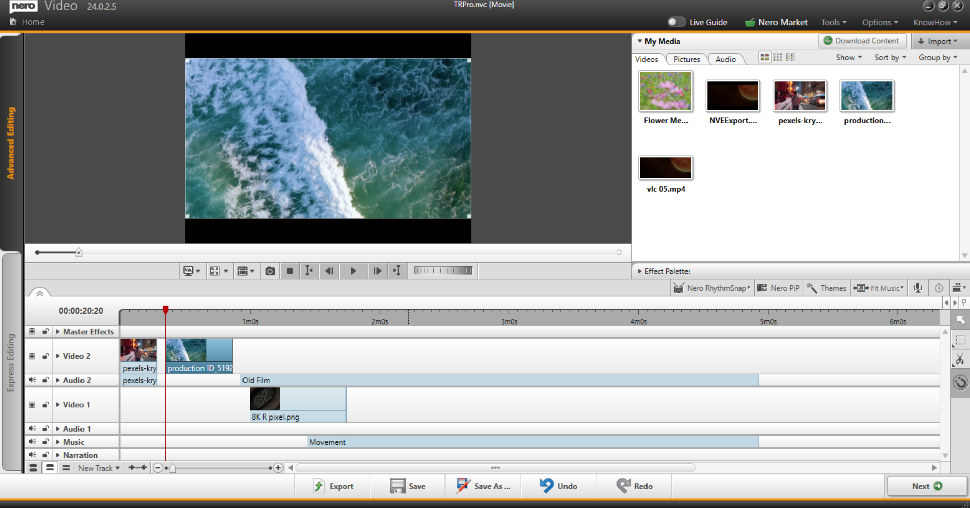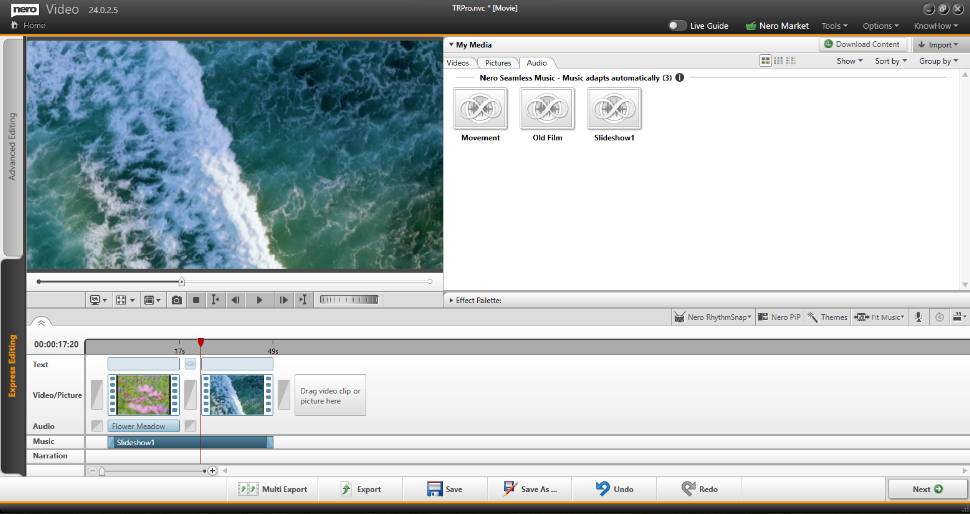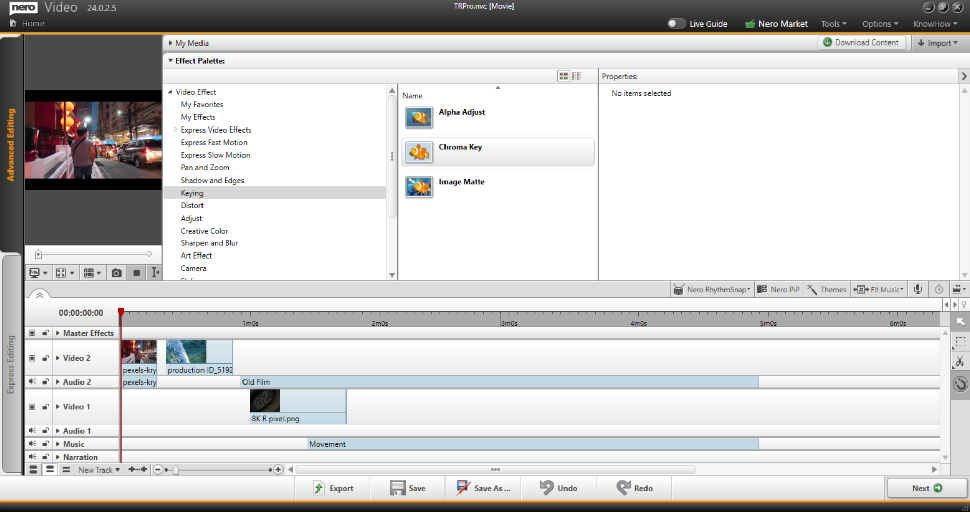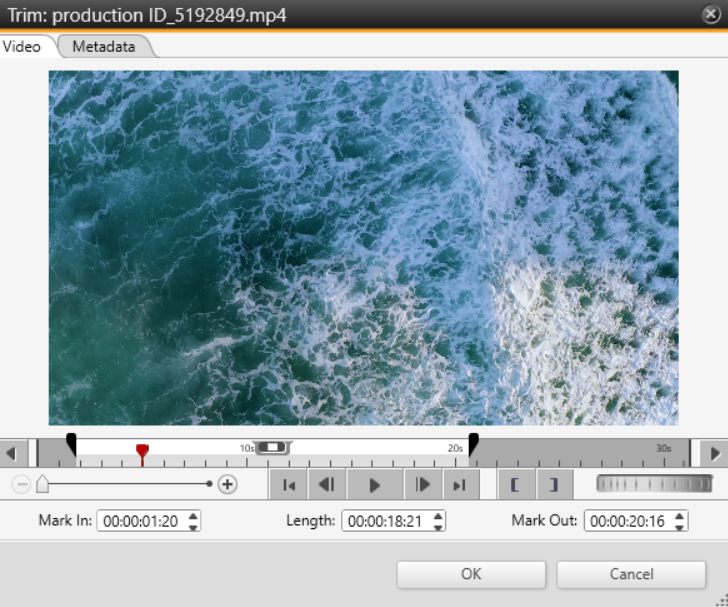Nero Video (opens in new tab) is the sort of streamlined video editing software that makes the editing process accessible to all.
That’s no bad thing.
Video, today, is universally essential. Marketing teams, web designers, students, and the next big YouTube stars all need access to video editing software – even if they’re not natural videographers. Those needs don’t always demand industry-standard editing software like Adobe Premiere Pro or Final Cut Pro (but if you’re curious, you can see how the two leading video edits compare in Adobe Premiere Pro vs Final Cut Pro).
Minimum requirements
+ Windows 7 +
+ 2 GHz AMD or Intel processor
+ 1 GB RAM
+ 5 GB hard drive space
+ Microsoft DirectX 0 compliant graphics card
+ 64 bit operating system for Ultra HD (4K) Editing
Famous, back in the day, for its disc burner tool (yes, it’s still going strong), in recent years Nero has been building out its software. While other products, like Nero TuneItUp PRO and Nero Burning ROM review well, the developer’s video editor has never managed to make the same impact.
When we last reviewed Nero Video, we praised its simplicity of use. However, we argued it only managed to cover the basics. Adobe Premiere Pro slayer this was not. This is software for beginners and intermediates. For rookie editors experiencing the first thrills of experiment with video. Or when you can just do without all the bells and whistles of professional editing tools. And that’s all it ever wanted to be.
But is there a space for Nero Video among the best low-cost, low-hassle video editors for low-end PCs?
Editing video

If you’re even faintly familiar with video editing, you should have no difficulty running through the basics of importing, editing, and exporting to your chosen format. For those that are less adept, the tool even features a wiki-style Live Guide – you can switch this on and off using the toggle switch along the ribbon – to help you get to grips with the system.
When you first load up Nero Video, you’ll navigate across three main panes:
– Preview screen
– Control panel
– Timeline
So far, so familiar.
Perhaps too familiar. That’s not to say it isn’t functional – it is – but the dated user interface wouldn’t look out of place on a Windows XP machine.
The timeline will be your primary playground, so drag and drop your video, image, or audio file into place to get started. Once in place, it’s relatively straightforward to cut clips together by moving the trim handles to the desired start and end point. For more granular control over individual clips, double-click to open the Trim window. Here, you’ll be able to navigate files frame-by frame to more precisely mark your cut points.

Depending on your skill level, you can tab between Advanced and Express Editing. The Express option is tailor-made for beginners. The basic UI strips out all but the most necessary tools, tracks, and settings, reminding us of the old Windows Movie Maker or Microsoft Video Editor.
Veterans won’t be phased by the Advanced option. It looks and feels like a simplified version of more powerful video editors, with the ability to modify or increase the number of video and audio tracks with a quick right-click.
However, once you move your project from Express to Advanced Editing, you won’t be able to switch back. So, it may be that you build a prototype structure in Express, and move the project to Advanced to properly refine your video.
Effects and extras

Nero Video might be basic, but it isn’t entirely frills-free. There are a few effects hidden within.
Nero Rhythm Snap has been around for years – effectively, it’s an automated slideshow maker that analyzes an audio track, creates rhythm markers, then automatically cuts clips to the markers so they match the music beat. Not an effect power-users are likely to invoke, but a nice-to-have feature for those looking for a quick fix.
In the same vein, like most other editors on the market, you’ll find a bevy of themes and templates. Accessed via the Effects Palette in the Control Panel, these let you easily and efficiently whip your videos into coherent form. The result? Professional-ish videos for those who simply don’t have the time to dive into the editing process and don’t mind forgoing a truly polished sheen.
There’s also a very basic green screen option, though the chroma keying doesn’t leave much to be desired when compared with more powerful video editor apps like Adobe Premiere Pro and CyberLink PowerDirector, or free counterparts like DaVinci Resolve, HitFilm, and Lightworks.
Elsewhere, Nero continues to plug AI upscaling capabilities into its software. This delivers moderate improvements to image quality and resolution. Most notable – perhaps even necessary in today’s market – is the tool’s 8K video support. Acting as a way to future-proof your content, the video editing software effortlessly handles the importing and editing of ultra HD video, even on older, sluggish machines. The disappointing downside, however, is a lack of 8K export options.
If you don’t expect – or need – Adobe After Effects levels of VFX software (or even those of the best Adobe After Effects alternatives), then the minimal tools on offer will suffice for casual video editors.
Final verdict

In the video editing sphere, Nero Video is the definition of ‘quick and easy’. Drag-drop-cut-done. Outputs can look fairly slick (with support for up to 4K exports), so long as you have the know-how to surface the right results, because there’s not enough within the tool to get you there alone.
If you’re a hardcore video editor, you’re unlikely to make the switch from top-end video tools like Adobe Premiere Pro. There’s simply not enough here to attain that level of professionalism.
If you’re an enthusiast in the early stage of your editing career or a creative on a budget, it might offer the basic tools you need to get started. For that purpose, it’s a fair alternative to Adobe Premiere Pro. Even then, it’s competing with the best free video editing software like HitFilm. But at least, this being a Nero product, you can always burn your movies onto disc, too.




